What is Bluelight?
Bluelight, by itself, is present in the sunlight, but it has 6 other colors with it. The sun emits all colors of light, including red, orange, yellow, green, blue, indigo, and violet. Sunlight is 42% infrared, nature’s version of photodynamic therapy. Blue is high energy, short wavelength light, and red/orange is lower energy, long wavelength light. Blue light has to have its antidote, red light, which is always present with blue light in nature. Factory setting screens from artificial devices typically have their color temperature set to 5750. This color temperature is consistent with solar noon. Every time you look at a screen, no matter what time, your brain gets the message that it’s solar noon, which screws up the circadian mechanisms in the eye.
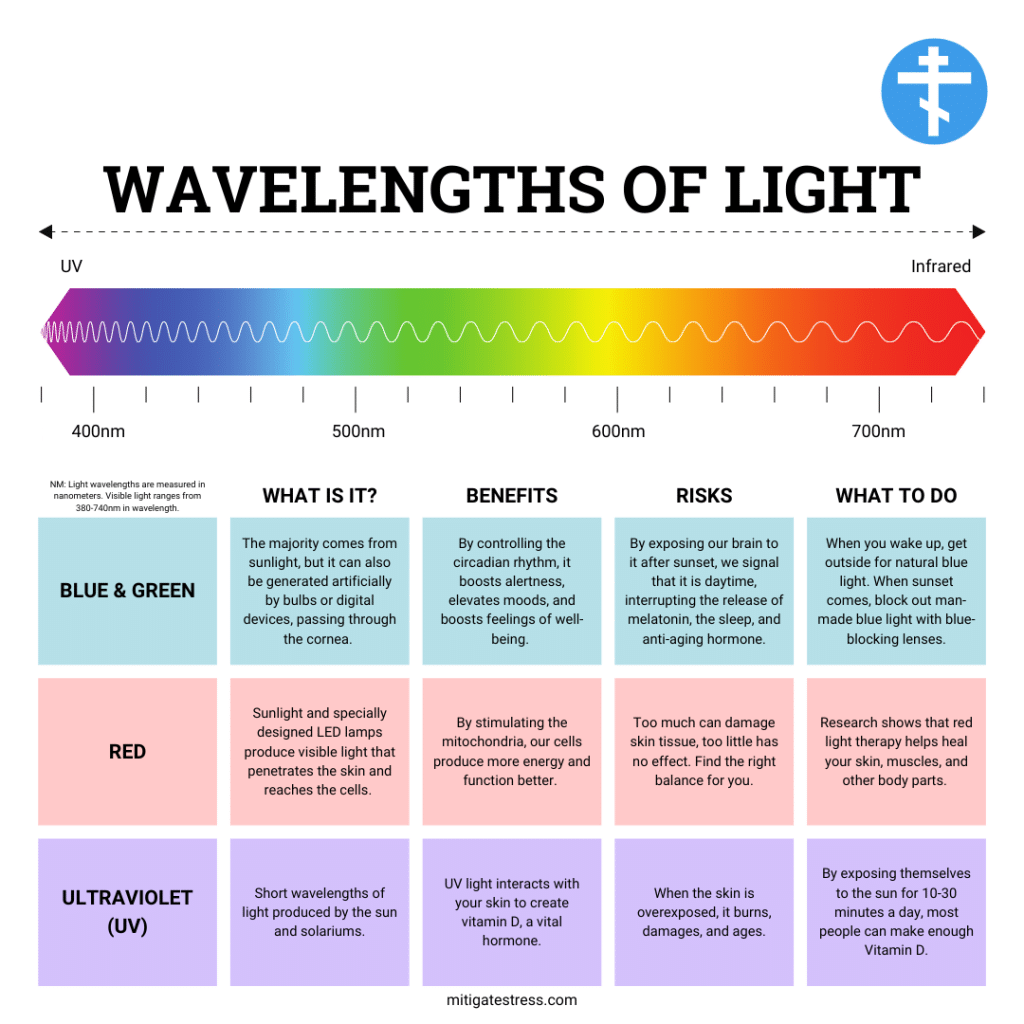
Bluelight helps to regulate your natural sleep and wake cycles, known as your circadian rhythm. It suppresses the production of melatonin, your sleep hormone (and much more, as we will discuss), and stimulates the release of cortisol, boosting alertness and keeping you wide awake.
Bluelight in nature is not harmful; however, artificial blue light is very harmful, and we should mitigate this huge stress at all costs. Exposure to blue light, especially after sunset, inhibits the release of melatonin for several hours. This impacts the depth of our sleep, recovery, and metabolism, leading to many health issues. Something to note is that EMF, Flicker Rate, and dirty electricity are also big environmental stress/toxicity factors. Usually, both EMF and Flicker Rate is present with modern blue light emitting devices and LED bulbs (we will discuss EMF more on another blog later and dive deeper into flicker rate later in this blog).
Poor Quality Sleep and Bluelight Toxicity Are Directly Linked To:
- Anxiety
- Depression
- Cancer
- Heart Disease
- Obesity
- Autism
- Diabetes
- Autoimmune Diseases
- Neurodegenerative Diseases
If the pigment is reduced in the eye, it is more susceptible to blue light damage and toxicity. That pigment is stimulated by full spectrum light, specifically light that has both UV blue and red in it; that part of the eye is called retinal pigment epithelium, and that pigment is actually melanin, just like in our skin. Generally, when you are blue light toxic due to too much technology usage, you have multiple different risks, but all of those risks stem from lowered melatonin levels in the brain. We also know that dopamine levels are reduced in the process. These both lead to psychological problems and hormone problems because dopamine is one of the guardians to the pituitary gland; melatonin is a guardian to the organelles in your cells that happen to make all the energy in your body.
Allopathic medicine focuses on DNA/RNA, and that’s the end all be all to them. We are learning from prominent researchers like Doug Wallace that all energy production comes from the mitochondrial genome, which only a few people talk about. Melatonin controls the two change programs that control mitochondrial energy production.
Bluelight basically makes you breathe less and sleep less and has hugely detrimental effects on your basal metabolic rate. This is why the effects of blue light are so catastrophic. Bluelight toxicity yields massive and negative effects throughout the entire body.
Some of these effects have been documented in peer-reviewed literature showcasing changes in memory and difficulty learning. Bluelight, over time, becomes a neurotoxin because it makes photo-chemicals in the eye, called free retinal, that destroy other photoreceptors in the body; it leads to depression, can lead to obesity, and can lead to some cancers, especially epithelial cancers. Bluelight has also been directly linked to cataracts, and significant issues with the retina, such as myopia or nearsightedness, hence why 96% of people that use screens in Asia under the age of 25 wear glasses for myopia, and lots of people use screens in Asia.
In an interview with Dr. Jack Kruse in 2021, he stated:
“A lot of people don’t realize that I am a neurosurgeon by trade; that’s my job; I can tell you for a fact that you can see the effect is widespread, it’s global, and it’s getting worse every day. Since 2010, children have never grown up in a world like before; blue light is everywhere and is much more dangerous to brains that are not fully myelinated. If you constantly irradiate their brain without protection, you are going to cause some significant mylanear damaging collateral effects down the road. For anyone who has watched the recent documentary ‘The Social Dilemma,’ algorithms and blue light can actually change the substance of what a person believes, thinks, and actually how they present disease.
The other thing we should be blocked from these toxic light spectrums are harmful frequencies, such as 435 – 465nm. Honestly, melatonin disruption is the elephant in the room, but protection should go all the way up to 500 nanometers. Unfortunately, most protection on iPhones, screens, etc., is not strong enough. This is why we must utilize blue light-blocking glasses and a screen filter and always have a red light present in the presence of blue light/junk light.
People need to be aware of the collateral effects of melatonin, yes, it affects sleep, but blue light by itself raises blood glucose and insulin. If you are blue light toxic, it is equivalent to you eating 5 cheesecakes a day. That has profound effects on the immune system, blood glucose, and insulin rise; you are at much higher risk for “viral disease,” but also at much higher risk for mold and fungal infections.”
Sunlight
What is the nature of sunlight? What is the body’s reaction to sunlight throughout the day?
Most people that are blue light toxic also have very low vitamin D levels; some studies have shown that blue light toxicity depletes vitamin D levels. Less vitamin D means less magnesium, calcium, and vitamin A. Everything is affected. Sunlight has different effects at different times of the day and seasons. Kelvin is a way to measure light. In the morning, the sun has roughly 1,200 – 1,600 kelvin. In the evening, at sunset, the sun typically has a kelvin rating of around 12,000.
We also have blue light detectors in our eyes, arteries, and skin. When the kelvin rating of the sun goes from 12,000 to 0, our brain tells us it’s physically nighttime. Anytime you check your cell phone, you can disrupt your melatonin level. On average, most kids and teenagers look at their screens around 150+ times a day, probably way more.
We must understand that there is a clock mechanism in your eye that controls everything in your body, even your metabolism. The majority of us humans keep disrupting our eye’s internal clock with alien light that we are not naturally designed to be seen at all times throughout the day, let alone after sunset. You can see why so many health issues are skyrocketing nowadays. Before all these artificial lights and added screen time, it was unheard of to see kids 15-25 killing themselves; nowadays, it seems to be a huge source of mental and health issues, causing the suicide rate to rise.
Dr. Jack Kruse stated;
“Even in daylight, looking at your phone throughout the day causes something called the pregnenolone steal syndrome, and usually it alters the cortisol and melatonin aspects. Cortisol is used to wake us up in the morning, and melatonin is used to put us to sleep. Over the day, cortisol should slowly flatten; when we get to night time, we usually should, be getting 4 hours of total darkness, but unfortunately, our cities, towns, and homes are ladened with artificial light everywhere from appliances, phones, TVs, streetlights, car lights, etc.
Several of my members went to a biohacking conference in California sponsored by Dave Asprey and were told blue light exposure during the day was NOT harmful at all in 2016 and quite helpful for the human eye. In fact, blue light had the benefits of alerting people and improving cognition. When they returned and told me about the event, I responded that this advice was probably the most damaging advice ever given at any event I’ve reviewed.
Then two years later, in 2018, a study from the University of Toledo proved my response to Asprey’s claims was fraudulent. We have many PEER-reviewed articles pointing out just how bad man-made blue light from screens is for the human retina.” — Dr. Jack Kruse (2021 Interview)
Firelight, candlelight, lightning strikes, candlelight, and moonlight are forms of light not technically from the sun found in nature. None of these lights inhibit the release of melatonin. Melatonin isn’t just a simple sleep hormone released in darkness. Melatonin is THE master hormone of apoptosis, mitophagy, and autophagy. Melatonin is the hormone of repair.
The first incandescent bulb was created in 1880.
The first LED bulb was created in 1962.
It was in the late 90s when blue light began to show up regularly in our homes after dark thanks to appliances, clocks, TV Screens everywhere, and of course, now our phones and laptops. As we stated earlier, this man-made light is not found anywhere in nature; the only place it would be found would be in the middle of the day, somewhere in Africa. This light is designed to raise your cortisol to keep you alert, awake, active, and productive (Natural Blue light, with Redlight Present).
Viewing this light anytime after dark will simply shut off your body’s natural repair process and stimulate stress hormones when they shouldn’t be released.
People really NEED to mind their screen time, just as they watch their diet and exercise. Light is a drug; some consider “Light Health” more important than diet and exercise.
One of the partners with Dr. Jack Kruse lost over 40 pounds of excess fat and water retention just from optimizing his environment, such as blue light exposure, incorporating red light, EMF mitigation, wi-fi routers, etc.
The Blue Light Antidote
Evidence-Based Results by Mitigating Blue Light & Utilizing Red Light Therapy
Parkinson’s:
Light therapy is powerful; in fact, we have evidence of legitimate studies showcasing the profound effects light therapy has on people experiencing debilitating diseases and reversing them. We know that light therapy has many benefits, such as improving mood, boosting the immune system, and promoting wound healing. However, can it also help with Parkinson’s disease? A study in France had trials for patients with Parkinson’s disease using light therapy. While patients have reported benefits, some scientists remain skeptical. Source
Metabolism, Blood Sugar & Diabetes:
Blood sugar is extremely important. Nineteen healthy adults were studied in 2016, and it was found that exposure to blue-enriched light in the morning and evening affects glucose metabolism in a significant way. Researchers found that just 3 hours of exposure is enough to trigger a dysfunction in our metabolism. Source
Now picture how detrimental blue light is at night when the sun is down, and you are exposed to artificial light everywhere from outside, inside, wherever. The sad reality is most honest Americans are enduring countless hours, anywhere from 8-12 hours daily or, even worse, nightly working and stressing under office lights, which, mind you, contain mercury (fluorescent bulbs, aka blue lights).
Like Dr. Jack Kruse, Dr. Ray Peat has written extensively on red and blue light and their vast effects on metabolism. You can read more of his writings here.
Dementia & Alzheimer’s:
A peer-review publication from Durham University saw 14 healthy people, ages 45 and above, who received roughly six minutes of PBM-T twice daily at a wavelength of 1068 nanometers over a span of four weeks. Another control group was tested by utilizing a fake PBM-T helmet. The scientists showcased a series of tests involving memory, verbal, and motor skills before and after the treatment. They found considerable improvements in performance for all the skills tested for the patients that received the PBM-T treatment compared to the placebo group. No adverse effects were reported during treatment. Source.
Another clinical study on Alzheimer’s disease was recently published. The study, conducted by Dr. Chaz and Dr. Dougal, found that a treatment called PBM-T1068 (also known as Transcranial near-infrared or tNIR) had a significant and fast positive impact on both men and women with mild to moderate dementia. This study was published in the journals, Cureus and Aging and Disease and led by Dr. Jason Huang (Texas A&M University). “After two to three weeks, participants reported having more energy, elevated mood and less anxiety, along with better physical and mental involvement in daily activities. Improved mood was also noted by caregivers.” (Source)
More About Red Light From Dr. Peat:
In his article, “Aging Eyes, Infant Eyes, and Excitable Tissues,” Dr. Peat says, “Red light is protective, blue light (or u.v.) is harmful, so wearing orange lenses would be helpful. Progesterone and pregnenolone, by reducing the stress reactions, should be helpful–in the eye diseases of infancy and old age, as they are in the respiratory distress syndromes. The older the person is, the more emphasis should be put on protective inhibition rather than immediately increasing energy production. Magnesium, carbon dioxide, sleep, red light, and naloxone might be appropriate at the beginning of therapy.” (Source)
He notes that experiments have also shown that light can trigger the enzyme cytochrome oxidase, which is present on mitochondrial membranes, to rev up cellular production, which can increase blood flow and stimulate cells to release several neuroprotective proteins and growth factors.
He states, “Cytochrome oxidase is one of the enzymes damaged by stress and by blue light, and activated or restored by red light, thyroid, and progesterone. It’s a copper enzyme, so it’s likely to be damaged by excess iron. It is most active when it is associated with a mitochondrial lipid, cardiolipin, that contains saturated palmitic acid; the substitution of polyunsaturated fats (PUFAs/Seed Oils) lowers its activity. Mitochondrial function in general is poisoned by the unsaturated fats, especially arachidonic acid and DHA.”
Dr. Peat goes on to say, “Penetrating red light is possibly the most fundamental anti-stress factor for all organisms. The chronic deficiency of such light is, I think, the best explanation for the deterioration which occurs with aging. Enzyme changes, free radical changes, structural and respiratory changes are all involved as consequences of toxic light stress, even too much darkness (lack of proper light and redlight at night).”
Dr. Peat believes that red light (as well as thyroid and progesterone) is among the most important factors that protect against estrogen, ionizing radiation, stress, shock, “free radicals, lipid peroxidation, thymic atrophy, osteoporosis, arthritis, scleroderma, apoptotic cell death, and other problems that are involved in tissue degeneration” or accelerated aging. (Source)
Blue Light Can Reduce Our Lifespan?
The study, Daily blue-light exposure shortens lifespan and causes brain neurodegeneration in Drosophila, demonstrates that exposure to blue light for 10-12 hours daily results in more than a 50% reduction of lifespan. It also shows that excessive blue light exposure (especially at night) induces neurodegenerative changes and systemic biomarkers of accelerated aging. (Source)
Georgi Dinkov has a somewhat humorous notation mentioned about this study. He stated, “Interestingly enough, the study sounds an alarm about the fluorescent lights used in most animal care facilities, warning that long exposure to such light may be affecting the outcome of animal studies and needs to be a factor controlled for in statistical analysis. Yet, the study is silent about the same light exposure of humans in office buildings or at home. I guess, research animals are more valuable to the medical industry than a few billion peons wasting away in office buildings designed after maximum security prisons….” (Source)
It’s important to understand that there hasn’t been much research on the long-term effects of the intense blue light we encounter throughout our day. Despite the average person being exposed to it almost constantly, there are currently no 80-year studies that show the consequences of increased daily blue light exposure on humans over their lifespan. In other words, our generation is THE experiment.
So if you want to stop accelerating your aging process like a lab rat, please take full action and stop procrastinating on mitigating this sneaky, toxic junk light that is ruining your health. Data continues to show that susceptibility to light increases with age, and repetitive, consistent exposure to blue light induces the expression of stress-response genes. Artificial blue light is not just damaging our retinas; it’s damaging our brains and, ultimately, our entire nervous system, which in turn degenerates the entire body.
Blue light has also been shown to flood our calcium ion channels, which can lead to serious mineral deficiencies, including magnesium, also known as the magnesium burn rate. This probably also occurs, again, due to the interference with vitamin D and lack of natural sun exposure.
The crazy thing is if you read a good chunk of these studies, the retina is not always directly exposed to blue light in order for blue-light-induced-damage to occur in the brain and the body for that matter (again, this affects the body on a systemic level). We cannot forget that the skin has copious amounts of blue light detectors throughout this giant, exposed organ, and most people have super intense bright, artificial white lights over their heads for most of the day. Really, they are surrounded by these artificial white lights for most of their life, rather.
Flicker Rate
One more thing we should mention about light is the flicker rate. Flicker is a typical characteristic of most artificial (man-made) light sources. Natural light has no flicker. Flicker occurs from the way these light devices are powered, and this depends on the type of lighting device/lamp as well as the electronics being used to power/drive the light source. The electricity that comes out from a typical wall socket can range from 50 or 60 Hz (AC = alternating current). This means the power that is being used to feed most lights is turning on/off 100 or 120 times a second. (Source)
A simple way to detect flicker right away is to use the slow-mo feature on your smartphone and take a quick video of any light source that you are using. We are talking about artificial light sources, including computer monitors, phone screens, TV screens, and modern-day light bulbs. Virtually all man-made light sources come with a flicker. Flicker is very destructive to our nervous system (not just blue light and EMF) and is something that should be considered and taken seriously. Check the table listed below that showcases several biological effects that occur when a human being is extensively exposed to flicker. Check out this website to see the full digest on light flicker.
The table below showcases the sources of flicker, the frequency range, and the biological effects on the human body, as well as the evidence to prove (Source)
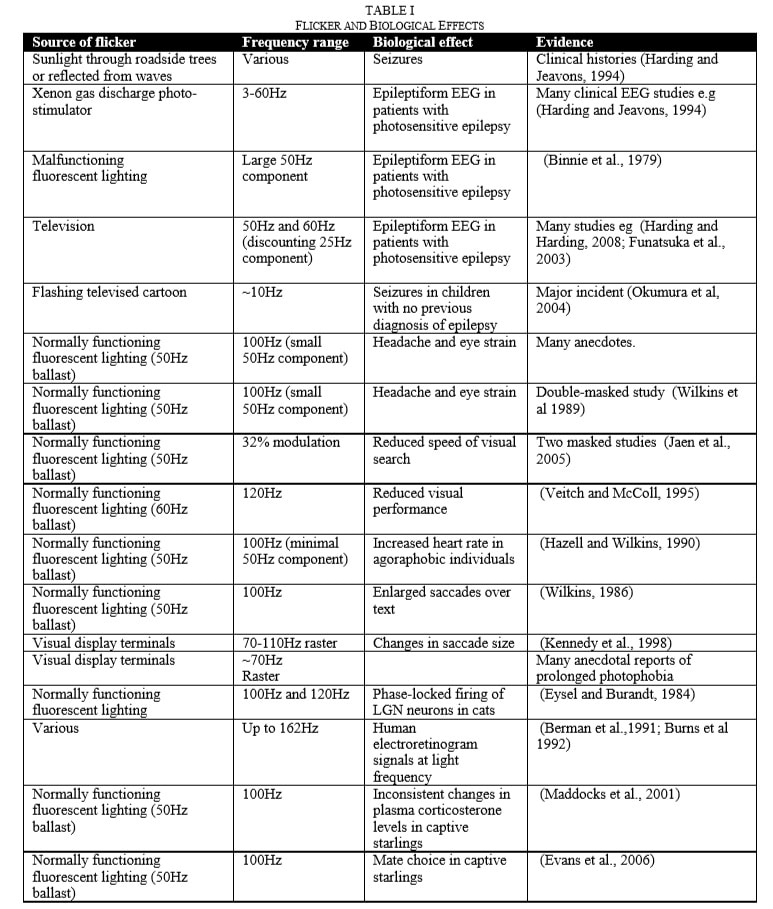
Honestly, this information should be posted everywhere because we know the modern man/woman can easily rack up 8+ hours at their desk job then go home and be glued to his/her computer, phone, or TV screen. In fact, we think it’s more likely to exceed that 10-12 hour mark for most individuals. We think it’s best to mitigate this stress completely because we have had enough of being excessively exposed to this toxic junk light.
Action Items
- Purchase and utilize daily a high quality, low flicker, low EMF Red Light Device such as the Gembared Beacon (our Favorite). Use it on your skin (no more than 10-15′) and as an ambient light at home or work. It’s powerful and versatile and offers healing benefits such as wound/injury healing, helps with skin issues, digestion, organ function, energy production, and more. Use Code MGS10 for 10% Off.
- Pick up a pair or combo pack of high-quality, blue-blocking glasses and use them daily. Order 2, one yellow (70% blue blocking Daytime) and one red (95+% blue blocking Night Time). We like the TrueDark Elites Set; they are affordable and housed in a durable aluminum frame. We like a few companies (RaOptics and BluBlox), but we’ve used TrueDark glasses for the longest. You can use our code MGS for 10% Off at TrueDark. They are affordable and have proof of their efficacy. We will be ordering other brands shortly to try out and test as well. There are a lot of counterfeit/garbage, fake blue-blocking glasses that do absolutely nothing, so be aware.
- Utilize red color filters on your phone/computer/TV screens
- On your phone or tablet, you can go to Settings —> Accessibility —> Display/Text Size —> Color Filters —> On + Maximum Red Mode. (This may vary from brand to brand.)
- Attach this with a macro/button if you desire; most computer devices have it; at the very least, always have the “night mode” yellow option on, and use your blue-blocking glasses.
- Change out the LED and fluorescent bulbs for low flicker, red/orange/yellow bulbs in your house (no blue light).
- Install a Sun Tunnel in your house/rooms, preferably one that goes through the attics. They probably mitigate some of the goodness of outdoor, naturally exposed sunlight, but they are great regardless! Skylights can also work to bring extra natural light into your home.
- Keep a window open wherever you are home to allow natural sunlight to enter and to get a breeze of fresh air; check our air filtration blogs for more in-depth air quality information. “Indoor Air Quality Solutions” and “WHY You Need a Proper Air Filter to Survive Indoors.”
- Use candlelight and low flicker, low emf red light at night.
- Stop using your soul-sucking electronic devices, use them less, and avoid them entirely after dark. Start reading books more under redlight and candlelight. This is hard, we know. In fact, plenty of people get triggered by this request. We are terrible at it ourselves; we converse with our clients online, our friends, our family, and our business. We commit the death scroll from time to time, but that’s the point; it has infiltrated our entire life. Take breaks from these devices, and never use them unprotected without blue light-blocking glasses and/or a red color filter; get out more, move more in the woods, nature, and ocean, explore local trails, have fun, play, trigger-point, guasha, build a homestead, etc. Enjoy your life away from your devices.
- When you’re in Home Depot or Walmart, or have a job with these new lab lights that they are installing, be sure to utilize some kind of blue protecting glasses. You may even want to go as far as wearing a hoodie/covering your skin, especially if you are going in after dark. If you are forced to work at a job with this kind of toxic environment, start mitigating this stress. Always cover up, and have a red light within 5-10 feet shining on your face/eyes to help balance/drown out the artificial blue light.
- On top of this, strive to get at least 30-60′ of sun per week. Try to get your morning sun 30′ within sunrise indirectly in the eyes (don’t stare directly at the sun, slightly off and away from it, but allow the light to enter the eyes). Stack this habit with grounding barefoot, slow Buteyko breathing, praying to God the Father, focusing on gratitude, and praying for others; pray for everything. If you are sensitive to burning, focus primarily on light exposure in the early morning (30 minutes before sunrise) and 30-60 minutes before sunset. Midday sun is still vital for everyone to have on a daily basis, but you will want to avoid direct exposure if you are sensitive to it.
- Consuming more raw saturated fats helps to displace all the polyunsaturated fats/PUFA. Pufas are highly light-sensitive and prone to oxidation/unstable toxic fats. Most raw saturated fats like grass-fed, raw, unsalted butter contain a good amount of fat-soluble vitamins A, D, E & K. All of which are designed to be combined with sunlight, aka “light food.”
Light is addictive. Better yet, light is a drug. If we are getting the wrong kind of light all day, this is a catastrophic problem. Choose wisely and start mitigating your stress today.
In Christ,
Nick & Nathan
References
- “HYPOXIA #15: BLUE LIGHT CAUSES IRREVERSIBLE HYPOXIA in ALL CELLS – Dr. Jack Kruse.” Jackkruse.com, jackkruse.com/hypoxia-15-blue-light-causes-irreversible-hypoxia-in-all-cells/?print=print. Accessed 13 June 2023.
- SinhaSep. 17, Gunjan, et al. “Trials Begin for a New Weapon against Parkinson’s: Light.” Science | AAAS, 17 Sept. 2020, www.sciencemag.org/news/2020/09/trials-begin-new-weapon-against-parkinson-s-light.
- Cheung, Ivy N., et al. “Morning and Evening Blue-Enriched Light Exposure Alters Metabolic Function in Normal Weight Adults.” PLOS ONE, vol. 11, no. 5, 18 May 2016, p. e0155601, https://doi.org/10.1371/journal.pone.0155601.
- “Infrared Light Therapy Might Aid Dementia Patients.” EurekAlert!, www.eurekalert.org/news-releases/931749. Accessed 13 June 2023.
- University, Durham. “Infrared Light Therapy Might Have the Potential to Help People Living with Dementia, according to Researchers. – Durham University.” Www.durham.ac.uk, www.durham.ac.uk/research/institutes-and-centres/wolfson/about-us/news/infrared-light-therapy-might-have-the-potential-to-help-people-living-with-dementia-according-to-researchers/. Accessed 13 June 2023.
- “Aging Eyes, Infant Eyes, and Excitable Tissues.” Raypeat.com, raypeat.com/articles/articles/aging-eyes.shtml. Accessed 13 June 2023.
- LGS. “Ray Peat on Red Light – LifeGivingStore.com.” Lifegivingstore.com, 18 Nov. 2018, lifegivingstore.com/ray-peat-on-red-light/. Accessed 13 June 2023.
- Nash, Trevor R., et al. “Daily Blue-Light Exposure Shortens Lifespan and Causes Brain Neurodegeneration in Drosophila.” Npj Aging and Mechanisms of Disease, vol. 5, no. 1, 17 Oct. 2019, www.nature.com/articles/s41514-019-0038-6, https://doi.org/10.1038/s41514-019-0038-6.
- konrad. “Light Flicker and Your Health – Most Artificial Sources of Light Have Flicker!” Sunlight Inside, 23 Feb. 2020, www.sunlightinside.com/light-and-health/light-flicker/. Accessed 13 June 2023.
* This post contains affiliate link(s) or codes. An affiliate link or code means I may earn advertising/referral fees if you make a purchase through my link, without any extra cost to you. It helps to keep our small business afloat. Thanks for your support.

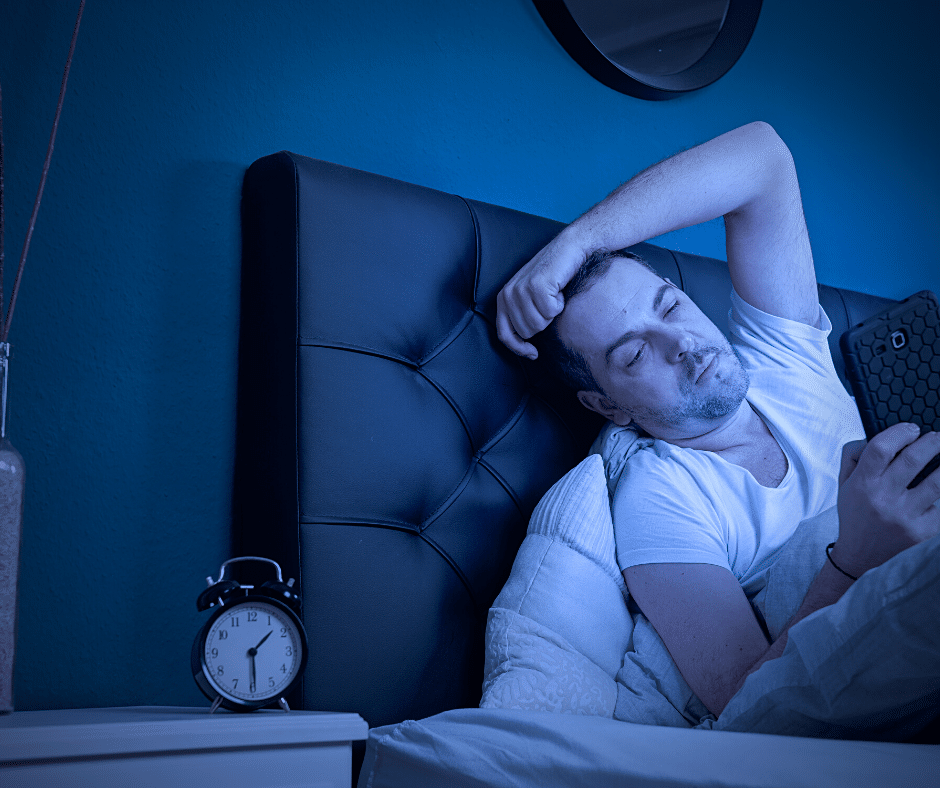


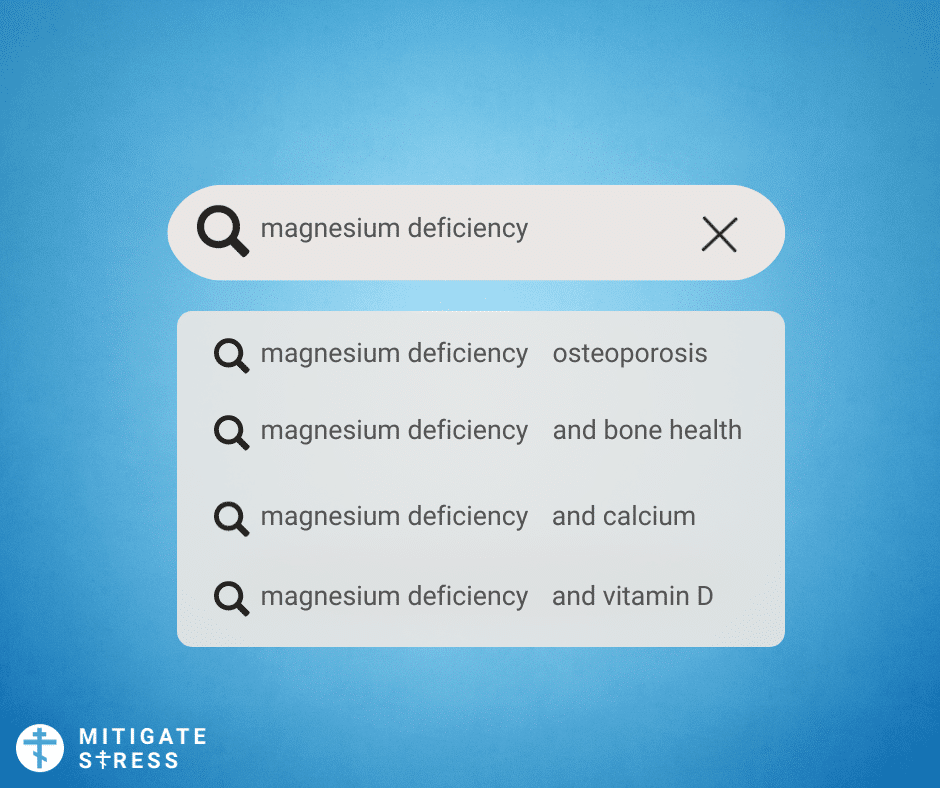
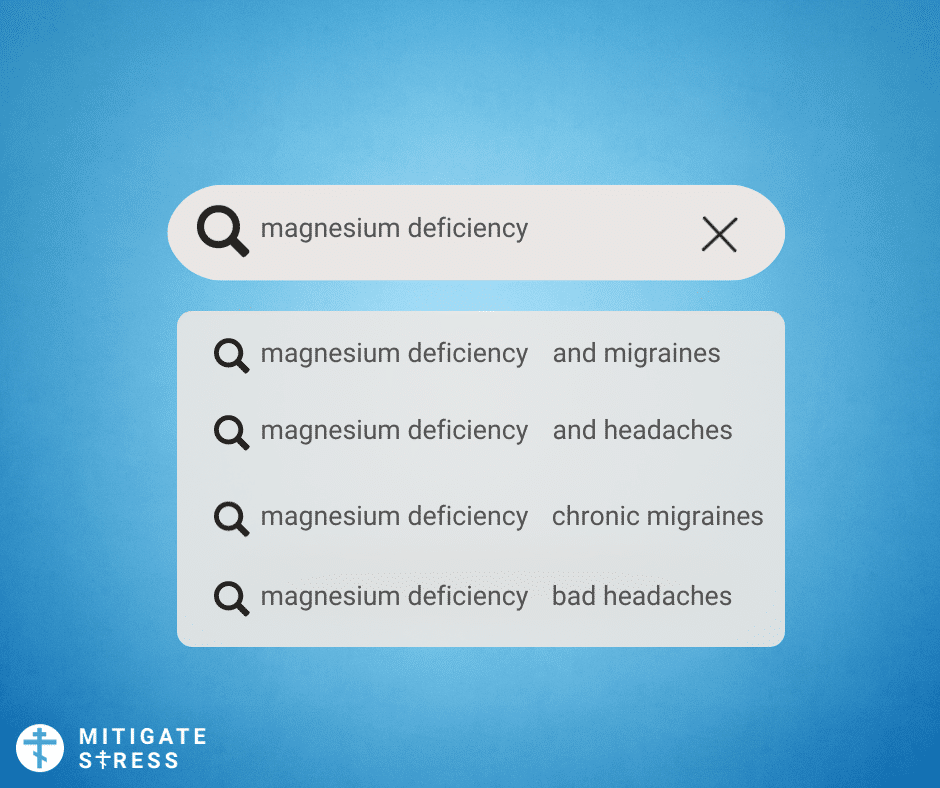
0 Comments